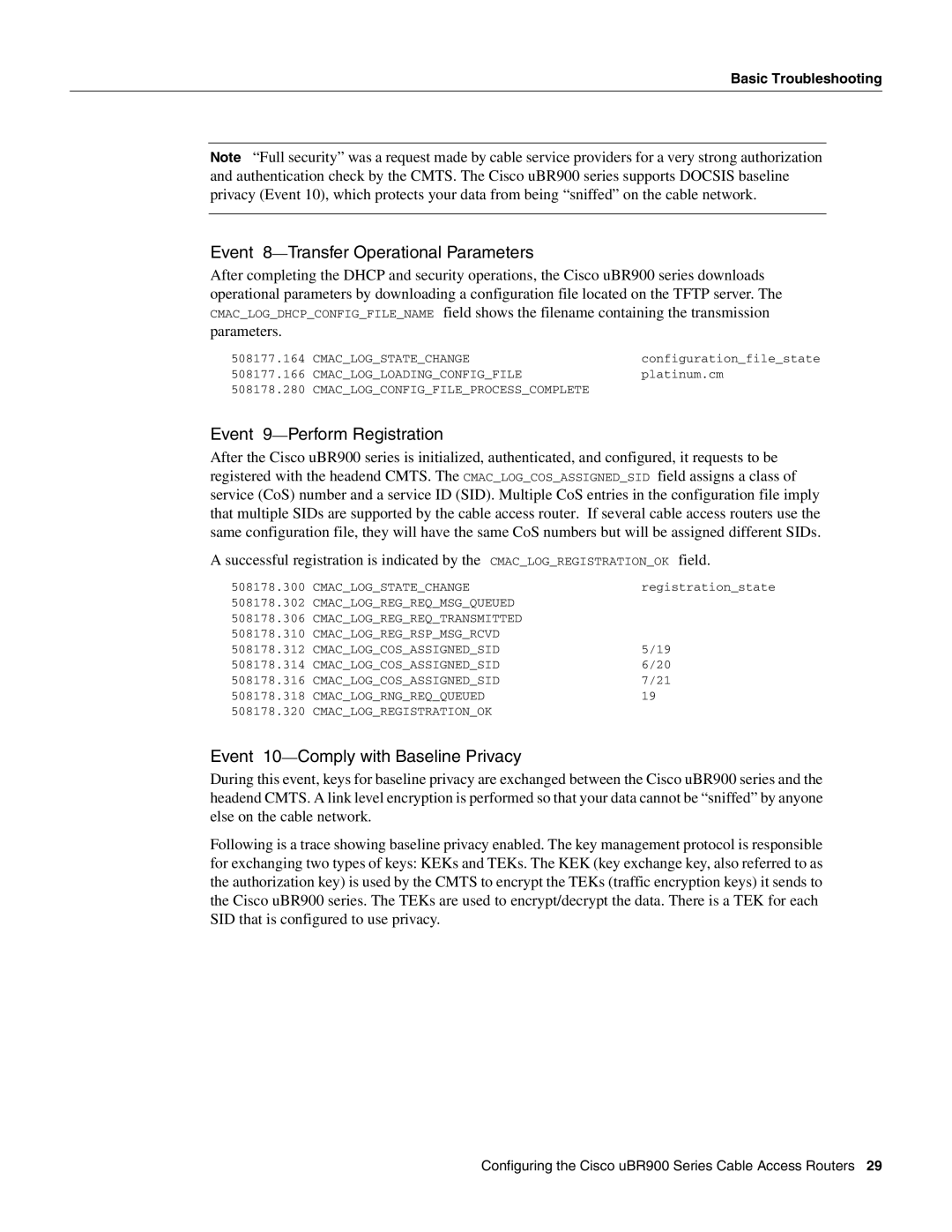
Basic Troubleshooting
A successful registration is indicated by the CMAC_LOG_REGISTRATION_OK field.
508178.300 | CMAC_LOG_STATE_CHANGE | registration_state |
508178.302 | CMAC_LOG_REG_REQ_MSG_QUEUED |
|
508178.306 | CMAC_LOG_REG_REQ_TRANSMITTED |
|
508178.310 | CMAC_LOG_REG_RSP_MSG_RCVD |
|
508178.312 | CMAC_LOG_COS_ASSIGNED_SID | 5/19 |
508178.314 | CMAC_LOG_COS_ASSIGNED_SID | 6/20 |
508178.316 | CMAC_LOG_COS_ASSIGNED_SID | 7/21 |
508178.318 | CMAC_LOG_RNG_REQ_QUEUED | 19 |
508178.320 | CMAC_LOG_REGISTRATION_OK |
|
Event 10—Comply with Baseline Privacy
During this event, keys for baseline privacy are exchanged between the Cisco uBR900 series and the headend CMTS. A link level encryption is performed so that your data cannot be “sniffed” by anyone else on the cable network.
Following is a trace showing baseline privacy enabled. The key management protocol is responsible for exchanging two types of keys: KEKs and TEKs. The KEK (key exchange key, also referred to as the authorization key) is used by the CMTS to encrypt the TEKs (traffic encryption keys) it sends to the Cisco uBR900 series. The TEKs are used to encrypt/decrypt the data. There is a TEK for each SID that is configured to use privacy.
Configuring the Cisco uBR900 Series Cable Access Routers 29
